Kia Sportage: Description and Operation, Specifications, Troubleshooting, Schematic Diagrams | Components and Components Location
Kia Sportage Third generation (SL) - (2011-2016) - Service and Repair Manual / Emission Control System / General Information / Description and Operation, Specifications, Troubleshooting, Schematic Diagrams | Components and Components Location
Description and Operation
Description
Emissions Control System consists of thee major systems.
- The Crankcase Emission Control System prevents blow-by gas from releasing into the atmosphere. This system recycles gas back into the intake manifold (Closed Crankcase Ventilation Type).
- The Evaporative Emission Control System prevents evaporative gas from releasing into the atmosphere. This system bums gas at appropriate engine operating condition after gathering it in the canister.
- The Exhaust Emission Control System converts the thee pollutants [hydrocarbons (HC), carbon monoxide (CO), and oxides of nitrogen (NOx)] into harmless substances by using the 3-way catalytic converter.
Specifications
Specifications
Purge Control Solenoid Valve (PCSV)
Specification

Fuel Tank Pressure Sensor (FTPS)
Type: Piezo-Resistive Pressure Sensor
Specification
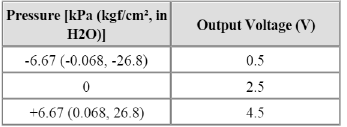
Canister Close Valve (CCV)
Specification

Tightening Torques

Troubleshooting
Troubleshooting
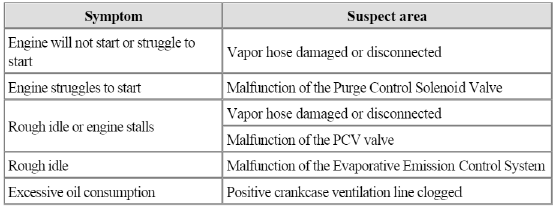
Schematic Diagrams
Schematic Diagram
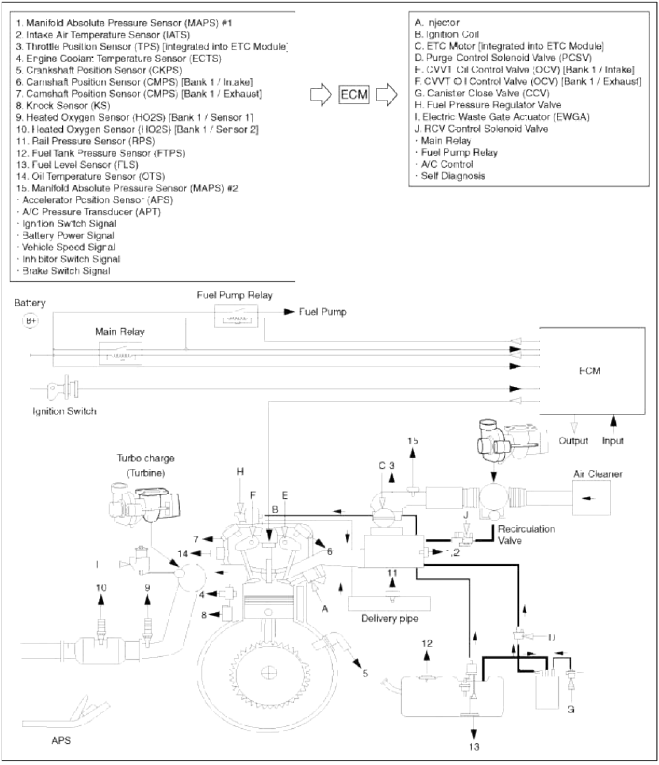
Components and Components Location
Components Location
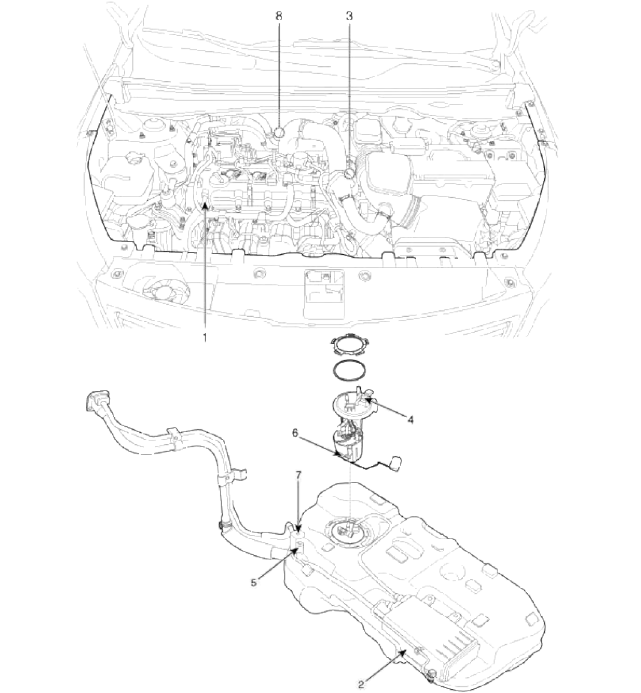
- PCV valve
- Canister
- Purge control solenoid valve (PCSV)
- Fuel tank pressure sensor (FTPS)
- Canister close valve (CCV)
- Fuel level sensor (FLS)
- Fuel tank air filter
- Catalytic converter (CCC)
1. PCV Valve
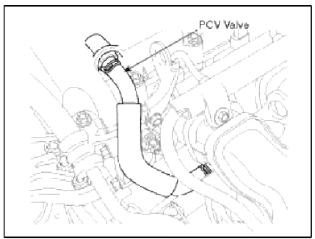
2. Canister
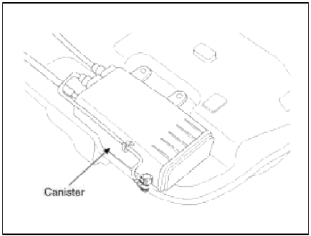
3. Purge Control Solenoid Valve (PCSV)
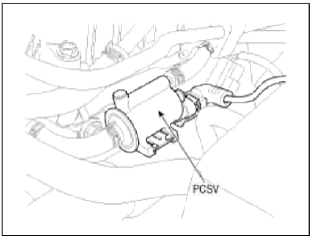
4. Fuel Tank Pressure Sensor (FTPS)
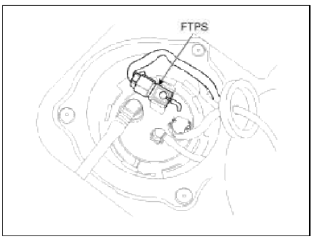
5. Canister Close Valve (CCV)
7. Fuel Tank Air Filter
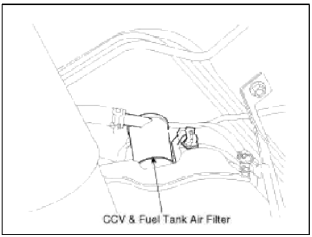
6. Fuel Level Sensor (FLS)
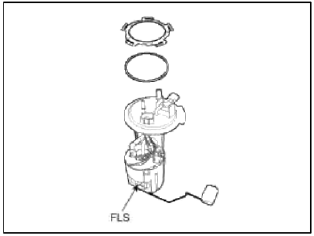
8. Catalytic converter (CCC)

READ NEXT:
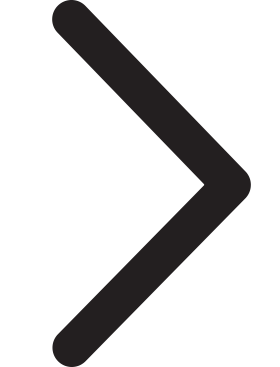 Schematic Diagrams, Repair procedures | Positive Crankcase Ventilation (PCV) Valve
Schematic Diagrams, Repair procedures | Positive Crankcase Ventilation (PCV) Valve
Schematic Diagrams
Schematic Diagram
Repair procedures
Inspection
1. After disconnecting the vapor hose from the PCV valve, remove the PCV valve.
2. Reconnect the PCV valve to the vapor
SEE MORE:
 Feature of Seat Leather
Feature of Seat Leather
Front seat
Sliding: Forward and Backward
Reclining: Back angle
Seat cushion height
Seat cushion tilt
Lumbar support*
Driver position memory system*
Headrest
Rear seat
Seat back folding
Armrest
Headrest
Seatback folding*
* : if equipped
WARNING
Loose objects
Loo
 Smart ISG features
Smart ISG features
Early Engine Restart
If the engine was stopped automatically
by ISG, Early Engine Restart can automatically restart the engine from ISG
without driver action when the vehicle
ahead pulls away and the front view
camera detects the preceding vehicle's
movement.
If the engine restarts au
Content
- Home
- Kia Sportage - Fifth generation (NQ5) - (2022-2025) - Owner's Manual
- Kia Sportage - Second generation (JEKM) (2005-2015) - Body Workshop Manual
- Kia Sportage Third generation (SL) - (2011-2016) - Service and Repair Manual
- Sitemap
- Top articles